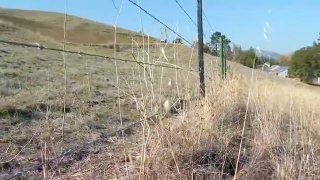
Now late in the fourth quarter of our rain season, any improvement in current drought conditions is looking unlikely for the region ahead of the transition to summer and the traditional start to fire season.
But, as recent years have shown, as drought becomes more frequent, fire seasons are being more of a year-round issue for California, which is navigating through warming temperatures and decreasing sustained rain seasons.
Approaching April, parts of the North Bay near Santa Rosa are missing nearly 20 inches of rainfall – a tremendous amount if you think about it – enhancing drought conditions with markedly reduced river and stream flows that are having a trickle down impact on Bay Area ecosystems as well.
Get a weekly recap of the latest San Francisco Bay Area housing news. Sign up for NBC Bay Area’s Housing Deconstructed newsletter.
For the rest of the Bay Area, from San Jose (missing more than 8 inches) and Livermore (missing nearly 9 inches) to San Francisco (missing near 12 inches), it is not a surprise that drought conditions remain unchanged since Oct. 1 of last year. In fact, for areas near the Sierra and Southern California, drought conditions have worsened since fall.
Some of this can likely be attributed to a La Nina winter, where odds for seeing average precipitation are lower from about the Central Coast down into Southern California. This is common when the jet stream tends to favor a Pacific Northwest focus through winter as resilient high pressure to the west of California sends storms more northward.
However, as the Drought Monitor timeline shows in and out of El Nino and La Nina years or non ENSO (El Nino Southern Oscillation) years, droughts overall are becoming more frequent and intense since 2000.
If you were to add Oct. 1-March 29 from 2019-20 and 2020-21 of this year, you would still see less than the average rainy season rainfall for just one year. Our unusually dry winter in 2020 and early season heat waves were leading factors behind an extended and intense fire season that saw a record more than 4 million acres burned statewide.
Local
As drought conditions are more intense this year versus last year, odds are currently higher for an early start to fire season should drier than average and warmer than average temperatures continue through spring.
Drought Monitor vs. One Year Ago
Drought Monitor Today vs. Oct 6, 2020